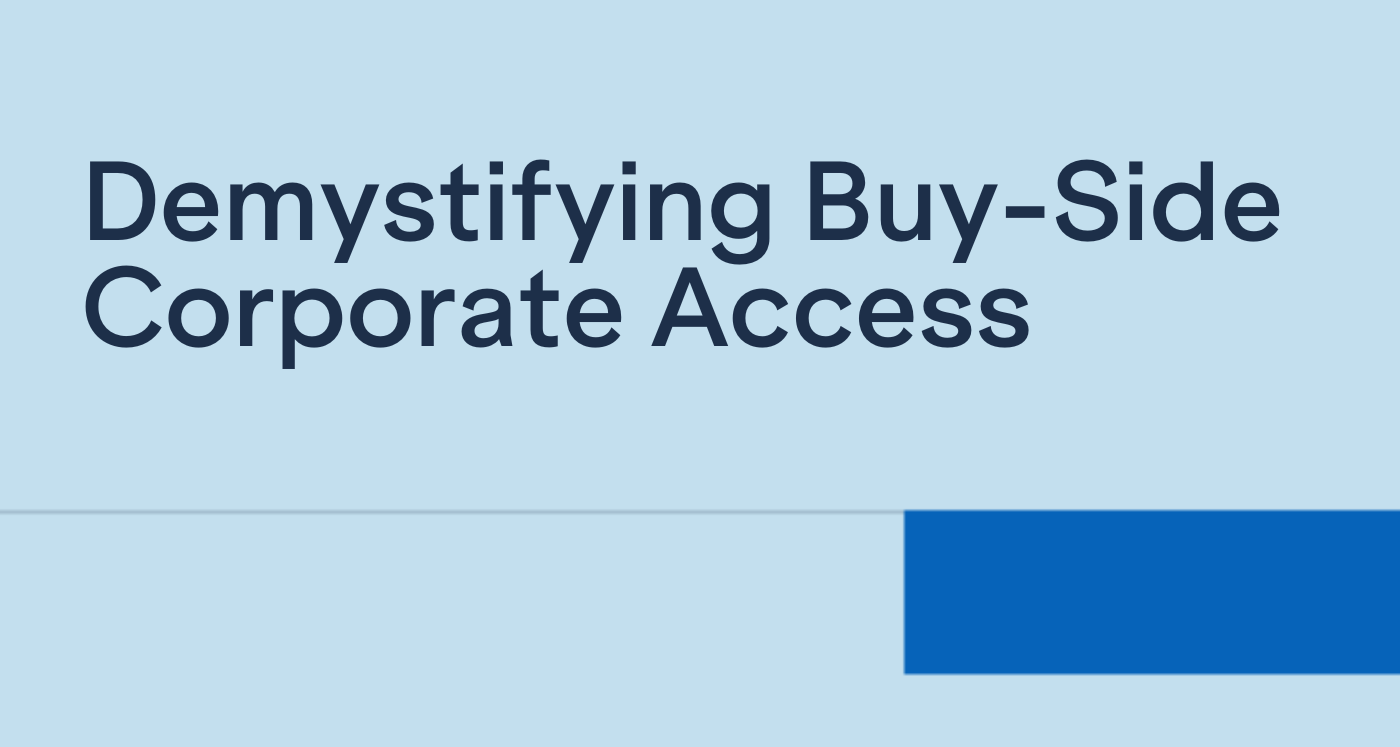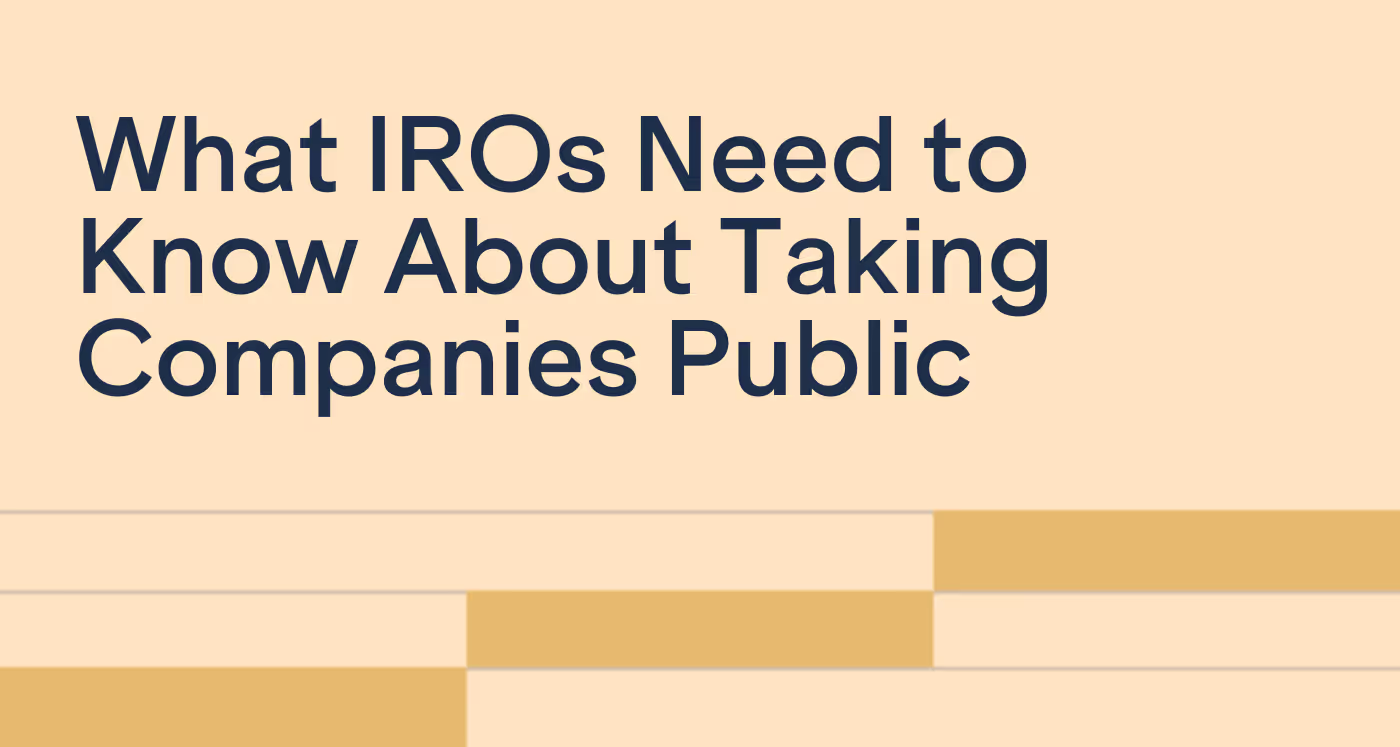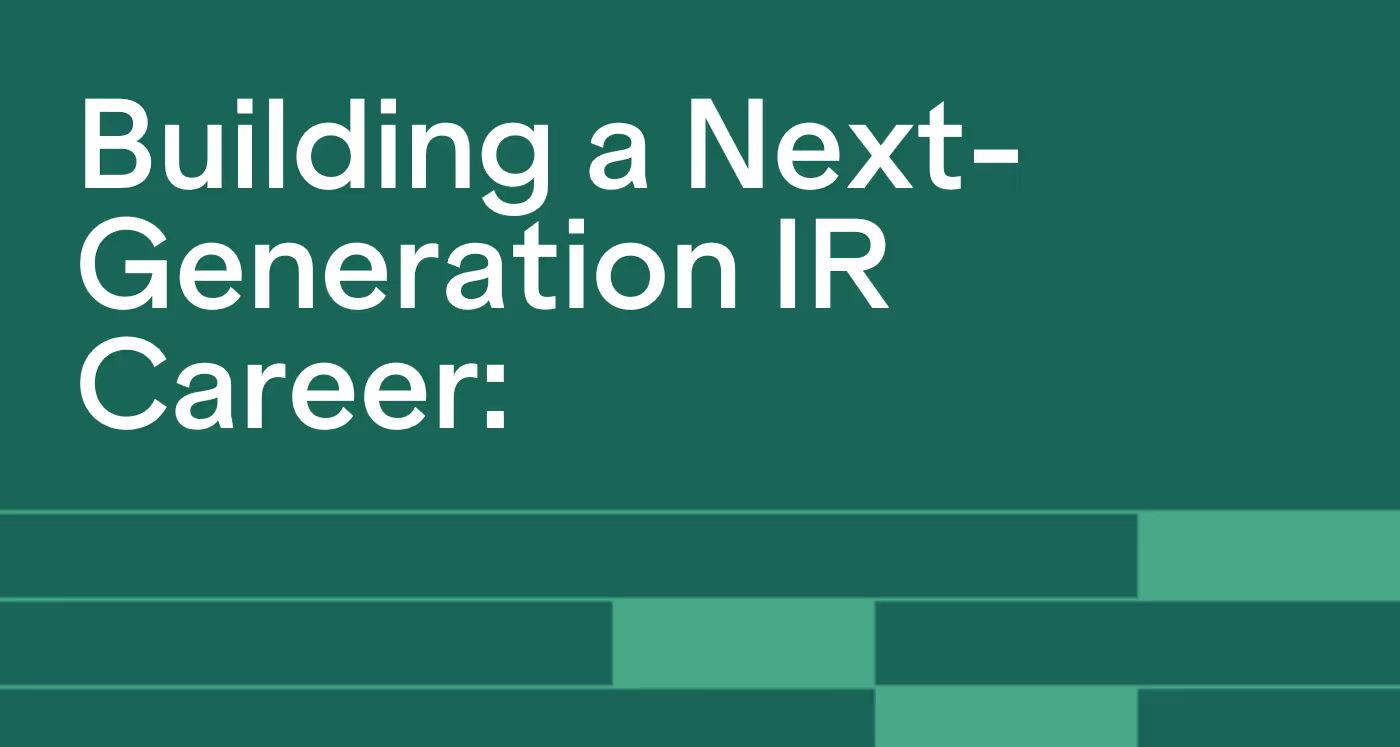
How to Build Effective Investor Targeting and Outreach Strategies for Small-Mid-Cap Companies
Learn how seasoned IR veterans are executing targeting strategies for small-mid-cap companies.

As regulatory requirements shift and standard practices in corporate access continue to develop, many IROs find themselves navigating unfamiliar territory when it comes to buy-side corporate access teams. IR teams must therefore deploy increasingly sophisticated strategies in their buy-side engagement.
To help demystify this evolving space, we sat down with Elizabeth Librizzi, Chief Administrative Officer for Equities at AllianceBernstein, who leads the global team managing corporate, external research, and expert and vendor relationships. With over 16 years of experience at Morgan Stanley and Credit Suisse in various roles, including institutional equity sales and Head of Corporate Access, Elizabeth offers unique insights into both sides of the corporate access equation.
When asked about the fundamental differences between buy-side and sell-side corporate access, Elizabeth explains that the core function remains remarkably similar. The primary distinction lies in the audience size and focus. While sell-side corporate access teams serve hundreds of clients, buy-side teams concentrate their efforts on serving their internal investment professionals. Elizabeth describes her role as "curating and partnering with our investment professionals to get the access to the corporate community they need to make their investment decisions."
The emergence of internal corporate access teams at buy-side firms stems from a need for more control and intentionality in corporate engagement. Elizabeth explains that corporate access represents "one of the newer offerings that the sell side was able to bring to the table," typically centred around conferences or road shows. However, investment teams often require access at specific moments that don't align with these scheduled events. Elizabeth explains:
"Very often when we are doing our work on the investment side we will have some questions, we will want to get access to the company, and it's very much a time-sensitive situation."
The finite nature of corporate access resources means that when corporate IR teams visit through sell-side partners, there's no guarantee of securing a meeting among hundreds of competing requests.
One of the most significant advantages of working with buy-side corporate access teams is their intentional approach to meetings. Unlike the traditional model, where meetings might occur simply because a company is "in town," Elizabeth's team operates with a clear purpose.
"It's not about taking a meeting for the sake of taking a meeting. There's a real purpose to why we're asking for access. Whether we're asking for it directly to the corporate, or whether we're asking one of our sell-side partners for it, it's very intentional. We won't take that meeting if it doesn't make sense for where we are in our process with investing in the company, and we'll be very transparent about that."
This intentionality works both ways. Elizabeth's team won't accept meetings that don't align with their current investment process, maintaining transparency about their decision-making.
For IROs wondering how to approach internal corporate access teams, Elizabeth recommends viewing these teams as valuable conduits rather than gatekeepers. Her team of three manages the global process from New York, serving as connectors across AB's 31 teams worldwide.
"We are not here to disintermediate the corporates from the investors directly or the sell-side from the investors directly. I view us as a conduit. Often, I find that a corporate IR team may not have all of the touch points internally. So, if nothing else, my team may be able to help that IRO meet five or six other people within our firm that are focused on their name, that they may not have met before."
When asked about the likelihood of securing meetings through corporate access teams versus direct outreach, Elizabeth highlights the reliability of response, stating that while you might receive a rejection, corporate access teams will respond to your requests. Even more importantly, rejections come with context:
"If we ever come back and say no, it's typically not no, period. It's probably no, not right now. And we'll give a reason why."
Working directly with buy-side corporate access teams offers several strategic advantages beyond meeting facilitation. Elizabeth's team provides valuable insights into how investors plan to engage with sell-side events in coming months, helping corporates optimize their marketing strategies. Elizabeth notes:
"The benefit of having a relationship with our centralized team is really having a purview into the broader scope of how we're looking at how we plan to engage in sell-side events in the coming months."
This intelligence can save corporates significant time and resources by directing efforts toward the most productive opportunities.
The team also maintains transparency about broker relationships, informing corporates IR teams when they don't work with specific sell-side firms. This honesty helps corporates understand the commercial dynamics at play and adjust their approach accordingly.
The rise of buy-side conferences represents another evolution in corporate access, though Elizabeth approaches these events strategically rather than trying to replicate traditional sell-side offerings.
"Our investors find a great deal of value in a sell-side sponsored conference, but my team doesn't have the bandwidth or the logistical ability, quite frankly, to replicate a sell-side conference."
Instead, Elizabeth's team focuses on niche topics highly relevant to their immediate investment focus. They've successfully launched events like a small-mid cap conference, recognizing that "sometimes it's a struggle for that market cap to get a full day of marketing when they come into a city." By partnering with other buy-side firms, they create valuable forums for underserved market segments.
"We're looking for kind of dislocations in the marketplace and focusing on that. This approach ensures their events complement rather than compete with existing sell-side offerings.
One of the most valuable aspects of working directly with buy-side corporate access teams is the quality of feedback available to corporates. Elizabeth acknowledges that feedback has traditionally been challenging to obtain, regardless of who arranges meetings.
"If a corporate has a meeting with AB, whether it's in our offices or virtually at a conference, and they come away and don't have a sense for how that meeting went, I think our investors would be disappointed.”
The key difference lies in the directness of communication. Rather than providing anonymous feedback through intermediaries, Elizabeth's team facilitates direct follow-up conversations between investors and corporates.
"Very often, our investment professionals will do a follow-up with IR directly. Particularly if there's something a constructive type of takeaway from the meeting."
This approach builds stronger relationships over time and provides corporates with actionable insights they can use to improve future engagements.
Perhaps the most important point Elizabeth makes concerns the biggest misconception about buy-side corporate access teams: "That we are disintermediary." Having experienced this concern firsthand during her sell-side tenure, Elizabeth understands the initial skepticism.
"When these desks started to emerge and I was on the sell-side, I was concerned about disintermediation.I just didn't see how there would be room for everybody at the table. Now I see that there very much is, because buy-side corporate access is a very different offering, and it's a very different ask."
The reality is that buy-side corporate access teams serve as facilitators rather than replacements for existing relationships.
"I view us as a conduit. The traffic cop that sits in the middle and directs people to where they need to be, at the time they need to be there."
Throughout our conversation, Elizabeth consistently returns to the theme of relationship building. Buy-side corporate access teams offer corporates the opportunity to develop sustained connections that extend beyond individual transactions or events.
This relationship-focused approach benefits all parties involved. Corporates gain access to multiple touchpoints within investment firms, receive valuable feedback and market intelligence, and build connections that can prove valuable over years of engagement. Investment teams benefit from more efficient access to corporate management when they need it most, while sell-side partners continue to play their essential role in the broader ecosystem.
For IROs navigating this evolving landscape, the key is recognizing that buy-side corporate access teams represent an additional resource rather than a replacement for existing strategies. By approaching these teams as partners in building long-term relationships, you can enhance your overall investor engagement strategy while maintaining the valuable connections you've already established.
As the corporate access landscape continues to evolve, understanding how to work effectively with both buy-side and sell-side teams will become increasingly important for successful investor relations programs.
Get access to expert insights from leading corporate access and investor relations professionals.

Learn how seasoned IR veterans are executing targeting strategies for small-mid-cap companies.

What IROs Need to Know About Taking Companies Public: Insights from award winning investor relations thought leader Catherine Buan.

Building a Next-Generation IR Career: Insights from Patricia Cruz, Senior Manager of Investor Relations at Etsy